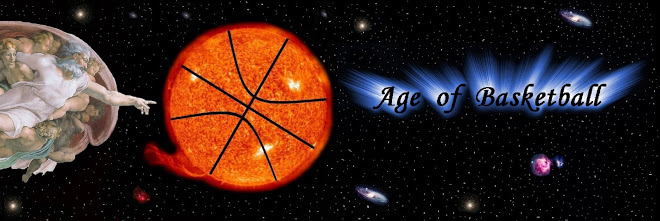Τίτλος: Design and interpretation of anthropometric and fitness testing of basketball players
Συγγραφείς: Drinkwater EJ, Pyne DB, McKenna MJ
Affiliations: School of Human Movement Studies, Faculty of Education, Charles Sturt University, Bathurst, New South Wales, Australia
Δημοσιεύτηκε: στο περιοδικό Sports medicine, 2008;38(7):565-78
PubMed link: http://www.ncbi.nlm.nih.gov/pubmed/18557659
Abstract:
The volume of literature on fitness testing in court sports such as basketball is considerably less than for field sports or individual sports such as running and cycling. Team sport performance is dependent upon a diverse range of qualities including size, fitness, sport-specific skills, team tactics, and psychological attributes. The game of basketball has evolved to have a high priority on body size and physical fitness by coaches and players. A player’s size has a large influence on the position in the team, while the high-intensity, intermittent nature of the physical demands requires players to have a high level of fitness. Basketball coaches and sport scientists often use a battery of sport-specific physical tests to evaluate body size and composition, and aerobic fitness and power. This testing may be used to track changes within athletes over time to evaluate the effectiveness of training programmes or screen players for selection. Sports science research is establishing typical (or ‘reference’) values for both within-athlete changes and between-athlete differences. Newer statistical approaches such as magnitude-based inferences have emerged that are providing more meaningful interpretation of fitness testing results in the field for coaches and athletes. Careful selection and implementation of tests, and more pertinent interpretation of data, will enhance the value of fitness testing in high-level basketball programmes. This article presents reference values of fitness and body size in basketball players, and identifies practical methods of interpreting changes within players and differences between players beyond the null-hypothesis.
 Age Of Basketball AGE OF BASKETBALL. Η μοναδική Αθλητιατρική Μπασκετική Πύλη στο ελληνικό διαδίκτυο ξεχωρίζει μέσα από το περιεχόμενο, τα άρθρα …
Age Of Basketball AGE OF BASKETBALL. Η μοναδική Αθλητιατρική Μπασκετική Πύλη στο ελληνικό διαδίκτυο ξεχωρίζει μέσα από το περιεχόμενο, τα άρθρα …